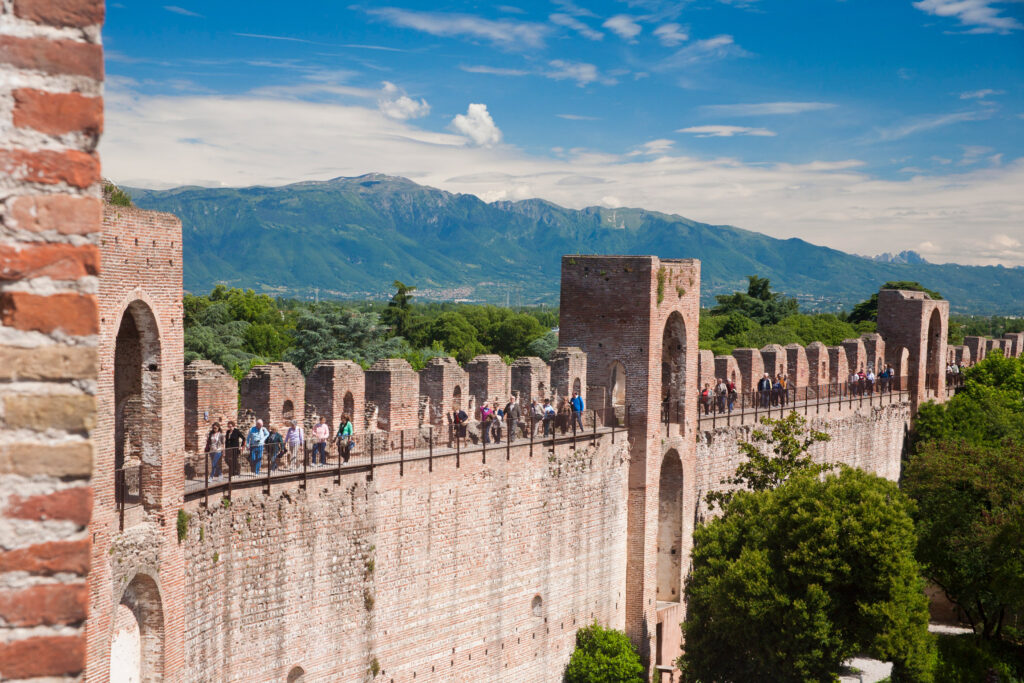The experience
Come and visit Cittadella, a splendid medieval walled town near important historic towns such as Padua, Vicenza and Treviso. Cittadella shares its Venetian historical background with other walled towns like Bassano del Grappa, Marostica, Asolo and Castelfranco Veneto. It was founded in 1220 when Padua decided to build a fortified castle ‘ex novo’ in the central Venetian plains in order to protect its country borders from aggression by Treviso and Vicenza, control the local lords and start a policy of agricultural colonisation. Cittadella’s foundation was therefore motivated by political, military and economic considerations although the area had been settled since ancient times. Whilst sources on the Paleo-Veneto civilisation are in short supply, it is known that the Romans settled the area in the II century B.C. In 148 B.C. they built the Postumia road running through Northern Italy connecting Genoa and Aquileia. To the Valsugana valley. The Romans organised their territory along these two important intersecting axes (decumanus and cardo respectively) with centuriation in 89 B.C., leaving an indelible mark on the area. The choice of location for Cittadella was not, therefore, accidental. It was on the southern border of a large centuriated agricultural area in the Bassano Alpine foothills, near the Brenta river and the resurgence belt as well as a number of important road axes. At the end of the Roman period, the territory was very probably under Lombard control although sources from the Early Middle Ages are limited. Most probably a general depopulation occurred and the area was wilder while other feudal powers developed around small towns like Onara, Fontaniva, Tombolo and Galliera. Between the 12th and 13th centuries Padua set in motion a vigorous expansionist policy and consequently clashed with Treviso and Vicenza. The middle Brenta area thus became a theatre for wars and the emergence of Cittadella must be seen in this context. Between 1237 and 1256, Cittadella underwent the terrible domination of local lordling Ezzelino III di Romano who built the Torre di Malta as a ghastly prison for his enemies in 1251. In the 14th and 15th centuries the town passed under the control of the Carraresi from Padua again and became an important stronghold for the town. In 1406, together with the whole Venetian mainland, Cittadella passed under the political domination of Venice in the form of its podestà or governor. The Most Serene Republic of Venice ruled over these lands until 1797 when Napoleon conquered the whole of the north in his Italian campaign. After the treaty of Vienna (1815), Veneto submitted to Hapsburg control until 1866 when it finally became part of the new Italian kingdom. Nowadays Cittadella has a population of 20,000, belongs to the province of Padua and is 36 km² in size.
Shortly
Tour
The Citadel Walls and the Patrol Walkway
Cittadella is the only city in Europe to have a medieval walkway, elliptical in shape and completely passable. You can climb above the Walls to a height of 15 meters while admiring a unique panorama.
The walls of Cittadella are one of the few examples of a defensive system with a Patrol Walkway that is still passable, perfectly preserved over time and still intact to this day. It is therefore one of the most beautiful defensive systems in Europe. The Patrol Walkway It is a 15-meter walk and it was the ancient guard walkway that was used to defend the city from above in case of enemy attacks. The recent restoration has made it possible to secure the ancient Patrol Walkway, to allow visitors to admire the city from new and privileged points of view, a truly unique experience.
The tour route is almost two kilometers long and along the way you can visit the re-enactment rooms and medieval set-up in the Captain’s House. In addition, inside the Tower of Malta you can visit the almost thirty-meter-high Belvedere, the Siege Museum and the Civic Archaeological Museum. From above, the landscape sweeps over the surrounding countryside: you can admire the Euganean Hills, the Berici Mountains, the Pedemontana with the walled cities of Marostica and Asolo, Monte Grappa. The entrance to the walkway is at Porta Bassano at the Casa del Capitano, at the IAT Tourist Office.
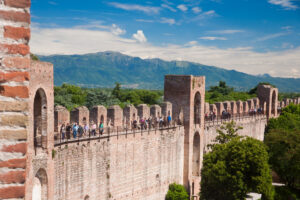
ADDRESS: Porte Bassanesi, 2 – 35013 Cittadella (PD)
USEFUL LINKS : muradicittadella.it
Duomo Museum
There is an Art Gallery, including the grandiose “Supper at Emmaus”, a Renaissance masterpiece by Jacopo Bassano. Inside there are works of different nature, painting, sculpture and applied arts from different historical periods, starting from the fourteenth century.
Visit a place rich in works of art The city’s cathedral presents a truly unique museum of sacred art, which brings together prestigious works created in different
epochs of its history. It is a rich and heterogeneous heritage of sacred objects for liturgical use, such as altar apparatus and goldsmiths but also paintings, statues and inscriptions.
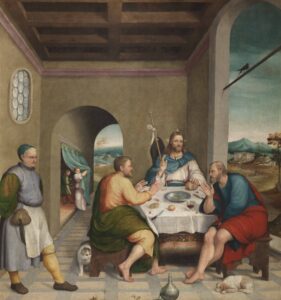
ADDRESS: Via Marconi 5 – 35013 Cittadella (PD)
USEFUL LINKS: duomocittadella.it
Praetorian Palace
It was the seat of the Podestà at the time of the Serenissima Republic of Venice. Inside there are frescoes of fake tapestry with vertical bands, polychrome friezes, roundels and medallions with portraits of illustrious personalities of the past, as well as the ancient prisons of the Magistrate’s Court. Immerse yourself in the Renaissance era of Cittadella The large building located on the street front near Porta Treviso and was the seat of the podestà sent first by the Municipality of Padua and then by the Serenissima.
The interior is striking for its faux upholstery decoration with vertical bands, polychrome friezes, roundels and medallions. Also interesting is the entrance portal in pink marble, characterized by a relief with the Lion of St. Mark and two medallions with the effigies of Pandolfo Malatesta and his brother Carlo, who were lords of Cittadella. The building, recently restored, is now the headquarters of the Fondazione Pretorio Onlus, which organizes national exhibitions
.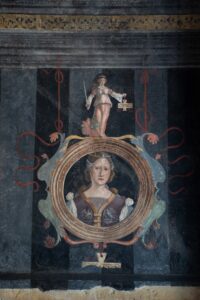
ADDRESS: Via Guglielmo Marconi 30 – 35013 Cittadella (PD)
USEFUL LINKS: fondazionepretorio.it
Social Theatre
The elegant neoclassical façade is attributed to Giuseppe Jappelli, author of the famous Caffè Pedrocchi in Padua. The splendid frescoes in the room were created by Francesco Bagnara, the same artist who decorated the “La Fenice” Theater in Venice. Admire the hidden “Jewel” of Cittadella The Theater stands on the street front towards Porta Vicenza, in Via Indipendenza. Designed by Giacomo Bauto in 1817, it was completed by Francesco Cibele, while the elegant neoclassical façade is attributed to Giuseppe Jappelli, author of the famous Caffè Pedrocchi in Padua. The theater is structured with an atrium, a semicircular hall with a stage, three tiers of boxes, a former smoke room. The splendid frescoes in the room depict flowers, cupids and allegorical images and were created by Francesco Bagnara, set designer and painter, who is also credited with the decoration of the La Fenice Theater in Venice.
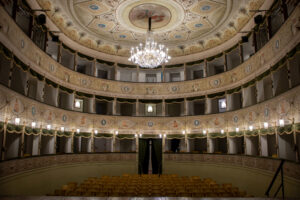
ADDRESS: Via Indipendenza 19 – 35013 Cittadella (PD)
USEFUL LINKS : procittadella.it
Oratory of the Savior
From the late seventeenth century, it houses works attributed to important international artists such as the frescoes of the French painter Louis Dorigny, and the marble busts of the Flemish Giusto Le Court. Enter this “Treasure Chest” of great value+ Overlooking the street, just outside the circle of the Walls, is the complex of Villa Nave Querini known as “Ca’ Nave” and Oratory of the Savior. Shortly after obtaining the noble title, Bernardo Nave, illustrious representative of the
A family that owned a manor house there, decided to renovate it and build a mausoleum chapel, which was built by 1689, on the site of an ancient xenodochio dedicated to San Lazzaro. The quality of the design, truly unusual for a chapel attached to a villa, led to the name of the architect Antonio Gaspari; Even the decorative solution, which transforms the interior space almost into a theater hall, is of the same quality: in fact, it can be considered one of the most
more homogeneous and precious examples of pictorial and sculptural decoration of the late seventeenth century.
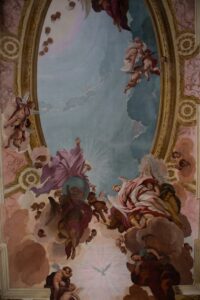
ADDRESS: Borgo Padova – 35013 Cittadella (PD)
USEFUL LINKS :visitcittadella.it
Let us guide you on your journey to the Roots
Don't miss the opportunity to explore the places that have shaped your origins, request a tailor-made itinerary without obligation


